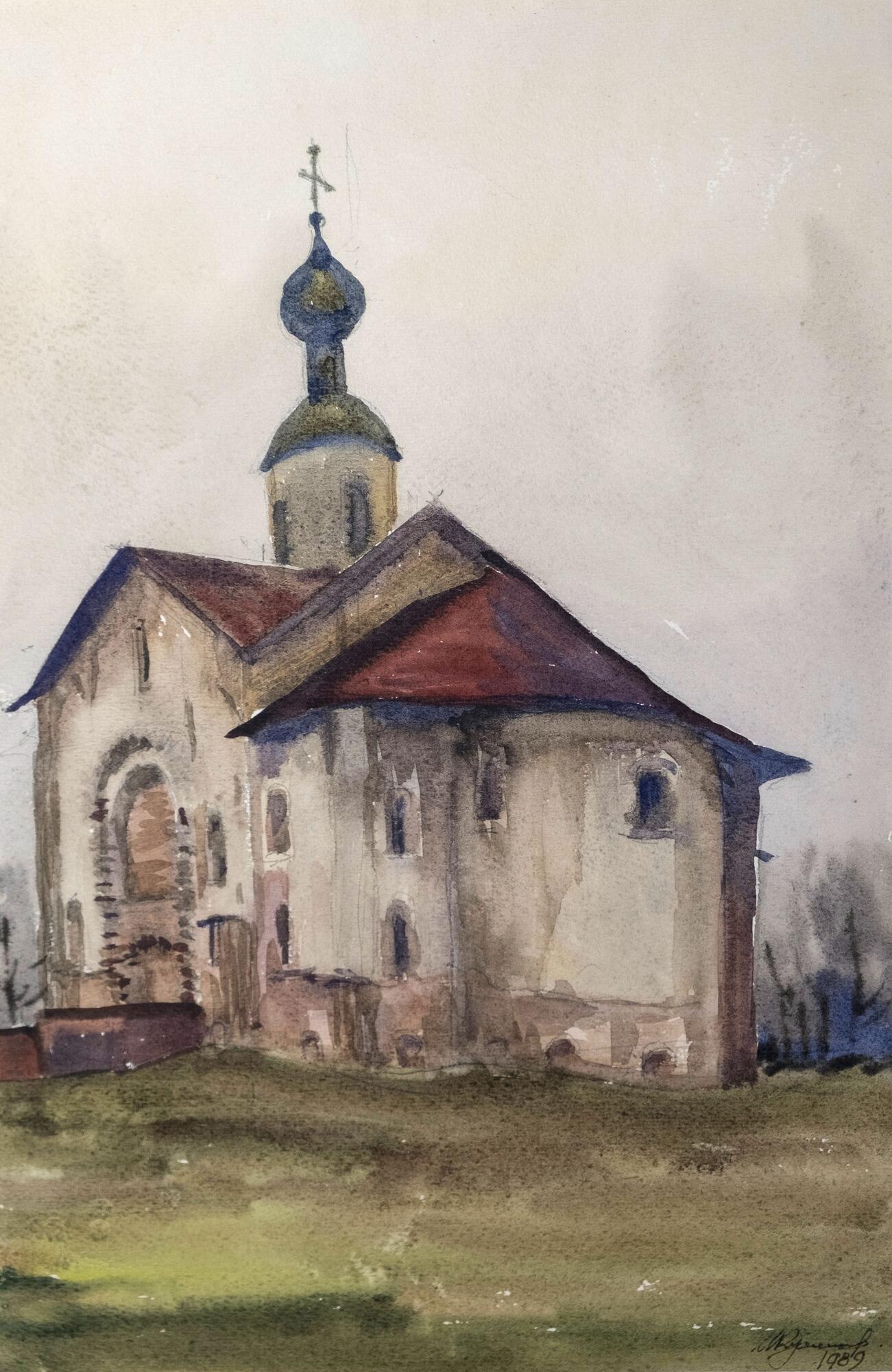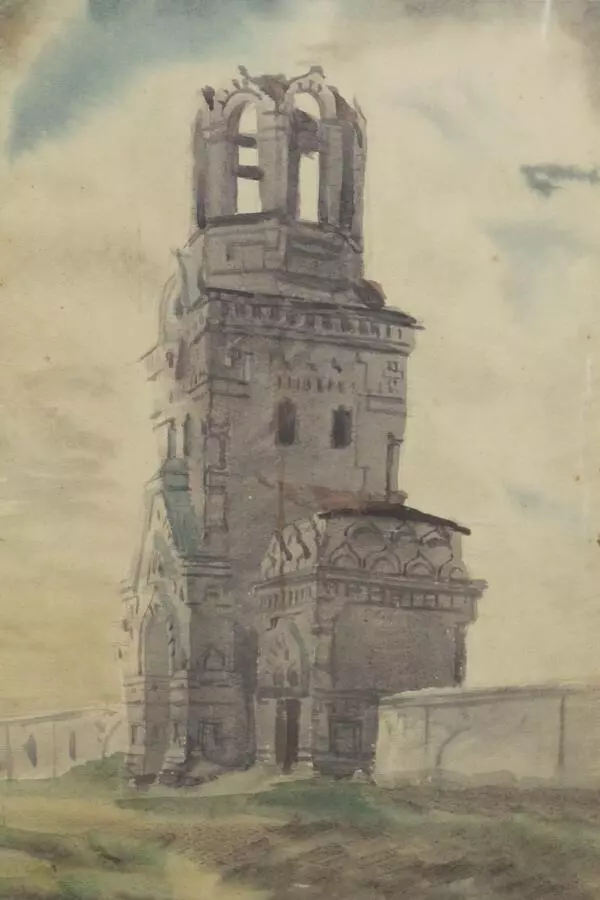Historically important objects in the Novgorod Trade Side were the Yaroslav’s Court and the Mart with the Church of Paraskeva Friday. Merchants also actively traded on Fridays at the Mart.
The Great Martyr Paraskeva Friday, or Paraskeva of Iconium, who lived in the 3rd century, was revered as a patroness of merchants, which explains the construction of a church dedicated to her in that area. Novgorod merchants considered it their patronal church.
The first wooden church was built there in 1156 commissioned by Novgorod merchants who traded overseas. The second, also wooden one, is mentioned in a chronicle in connection with the year 1191 and one Constantine and his brother. The chronicle reports that it was constructed in stone in 1207, which was also initiated by the merchants.
The Church of Paraskeva Friday was rebuilt several times. According to sources, it survived 15 fires, the most severe of which was the “great fire” of 1345. In the 16th century, the church was renovated by the decision of the merchants. Partial changes to it, for instance, a new dome, were made in the 18th century.
It is worth noting that during the renovation works, the architects sought to preserve the original appearance of the church, so it is now quite easy to reconstruct it. When it was being restored, it was possible to identify many of its features that have been preserved since the olden days. The fundamental restoration of the monument began in 1954 and took almost 50 years.
Nowadays, the building has become a unique museum of Novgorod architecture.
The painting was created by the professional architect Ilya Iosifovich Kushnir, a native of Soltsy, Novgorod Oblast, and a veteran of the Great Patriotic War. After graduating from the Institute of Civil Engineering in Leningrad, he expressed a desire to participate in the restoration of Novgorod, and was sent there. Ilya Iosifovich worked his way up from an architect to the head of a project studio. In 1966–1972, as the chief architect of the city, he erected a number of residential and public buildings on Bolshaya St. Petersburg Street, Bolshaya Moskovskaya Street, Voskresensky Boulevard and others.
Kushnir organically combined his work as an architect with academic research in the field of Rus architecture; some motifs of medieval architecture can be seen in his own projects.
Professional attention to detail, meticulously calculated proportions and perspective, combined with a lyrically conveyed atmosphere of the city, were also manifested in Ilya Iosifovich’s watercolors.
The Great Martyr Paraskeva Friday, or Paraskeva of Iconium, who lived in the 3rd century, was revered as a patroness of merchants, which explains the construction of a church dedicated to her in that area. Novgorod merchants considered it their patronal church.
The first wooden church was built there in 1156 commissioned by Novgorod merchants who traded overseas. The second, also wooden one, is mentioned in a chronicle in connection with the year 1191 and one Constantine and his brother. The chronicle reports that it was constructed in stone in 1207, which was also initiated by the merchants.
The Church of Paraskeva Friday was rebuilt several times. According to sources, it survived 15 fires, the most severe of which was the “great fire” of 1345. In the 16th century, the church was renovated by the decision of the merchants. Partial changes to it, for instance, a new dome, were made in the 18th century.
It is worth noting that during the renovation works, the architects sought to preserve the original appearance of the church, so it is now quite easy to reconstruct it. When it was being restored, it was possible to identify many of its features that have been preserved since the olden days. The fundamental restoration of the monument began in 1954 and took almost 50 years.
Nowadays, the building has become a unique museum of Novgorod architecture.
The painting was created by the professional architect Ilya Iosifovich Kushnir, a native of Soltsy, Novgorod Oblast, and a veteran of the Great Patriotic War. After graduating from the Institute of Civil Engineering in Leningrad, he expressed a desire to participate in the restoration of Novgorod, and was sent there. Ilya Iosifovich worked his way up from an architect to the head of a project studio. In 1966–1972, as the chief architect of the city, he erected a number of residential and public buildings on Bolshaya St. Petersburg Street, Bolshaya Moskovskaya Street, Voskresensky Boulevard and others.
Kushnir organically combined his work as an architect with academic research in the field of Rus architecture; some motifs of medieval architecture can be seen in his own projects.
Professional attention to detail, meticulously calculated proportions and perspective, combined with a lyrically conveyed atmosphere of the city, were also manifested in Ilya Iosifovich’s watercolors.





